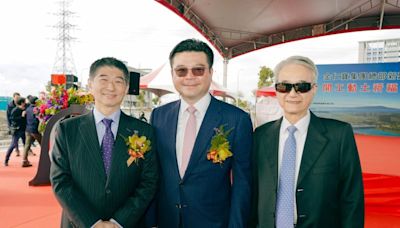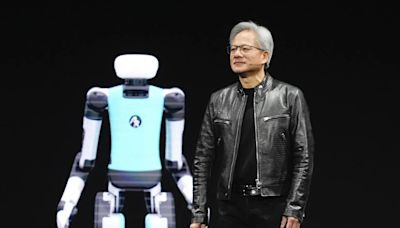搜尋結果
- 38.60-0.70 (-1.78%)2024/05/28 21:25 臺灣股市 已收盤 (報價延遲20分鐘)。
- 昨收39.30開盤39.60委買價38.60委賣價38.65
- 今日價格區間38.35 - 39.6052週價格區間26.80 - 40.85成交量38124 張平均成交量33516 張
- 市值168.190 億本益比 (最近12個月)20.75營運報告/法說會日期2024-08-09除權除息日2024-03-29
相關股票
A National Treasure ( Korean : 국보; Hanja : 國寶) is a tangible artifact, site, or building deemed by the Government of North Korea to have significant historical or artistic value to the country. History.
Rinpoche, also spelled Rimpoche ( Tibetan: རིན་པོ་ཆེ ་, Wylie: rin po che, THL: Rinpoché, ZYPY: Rinboqê ), is an honorific term used in the Tibetan language. It literally means "precious one", and may refer to a person, place, or thing—like the words "gem" or "jewel" ( Sanskrit: Ratna ). [1]
The Three Treasures or Three Jewels (Chinese: 三 寶; pinyin: sānbǎo; Wade–Giles: san-pao) are basic virtues in Taoism. Although the Tao Te Ching originally used sanbao to mean " compassion ", " frugality ", and " humility ", the term was later used to translate the Three Jewels ( Buddha , Dharma , and Sangha ) in Chinese Buddhism , and to ...
- Background
- History
- List of Coins Issued
- Rebel Coinages
- See Also
- Sources
After the Mongol Empire began their campaigns against the Western Liao, Western Xia, and Jin dynasties, they started to cast their own copper cash coins with the inscription "Da Chao Tong Bao" (Chinese: 大朝通寶). It is currently unknown if these coins were already cast under Genghis Khan or if production started under Kublai Khanduring the Yuan dynast...
Kublai Khan, Temür Khan, and Külüg Khan
Kublai Khan asked his advisor Liu Bingzhong about the usage of coinage and with a Yin and Yang metaphor Bingzhong claimed that no peace could exist within the Yuan empire if coins continued to be used and advised for the exclusive circulation of mulberry barkpaper money. The "Zhongtong Yuanbao" coins were only cast for 3 years (1260 to 1263), later coins would again be issued under Kublai Khan. In the year 1285 Liu Shirong advocated for the creation of the Zhiyuan Tongbao (至元通寶) cash coins, s...
Ayurbarwada Buyantu Khan and the cessation of production
Ayurbarwada Buyantu Khan completely ceased the production of coinage in favour of paper money and made it illegal to use coins for payment, however the private production of copper cash coins would persist despite these laws. Because the khans of the Yuan dynasty were Buddhists they allowed Buddhist temples exemption from taxation and granted them special rights to cast bronze statues, and mint their own coins for religious offerings. During the periods that paper money was considered to be l...
Toghon Temür
For 40 years the production of coins would not continue until the reign of Toghon Temürwho started casting coins again in 1350 alongside his new series of banknotes. There are three basic typed of the Zhizheng Tongbao (至正通寶) cash coins. The first type has the Earthly Branch, indicating the year of casting, written in 'Phags-pa script located above the square centre hole situated on the reverse side of the cash coin. The Zhizheng Tongbao cash coins with the reverse inscription "寅" (meaning 135...
Coins issued by the Mongols before the establishment of the Yuan dynasty include the "Da Chao Tong Bao" (大朝通寶), "Da Guan Tong Bao" (大觀通寶), "Tai He Tong Bao" (泰和重寶), and "Da Ding Tong Bao" (大定通寶), these coins were all issued in the conquered lands of the former Jin dynasty and are subsequently known as frontier or border area coins.After the Song dy...
During the Red Turban rebellion organised by the White Lotus society; many of its leaders proclaimed their own kingdoms and empires that ruled over different regions of China, the most successful of these was Zhu Yuanzhang’s Ming dynastywhich would unify China. Though the majority of these countries were short-lived some did produce their own coina...
Watt, James, ed. (2010). The World of Khubilai Khan: Chinese Art in the Yuan Dynasty. New York City: Metropolitan Museum.Shinpan kaisei, Kosen nedantsuke, Narabi ni bantsuki (Improved New Edition: Price List of Old Coins, Together with Rarity Ranking), printed in the city of Nagoya, Tokugawa Shogunate (Japan) in 1799.Hartill, David (2005). Cast Chinese Coins. Trafford, United Kingdom: Trafford Publishing. ISBN 978-1412054669.Nyaama, Badarch (2005). The Coins of Mongol Empire and Clan Tamghas of Khans (XIII-XIV). Ulaanbaatar. (in English and Mongolian).These cash coins are typical of the hybrid inscriptions formed by combinations of inappropriate characters. They also have series numbers on the reverse. Note that the radical "釒" is missing from this Wu Zhu (五朱) coin. One variant of the Wu Wu (五五) coin has the Xin dynasty inscription Huo Quan (貨泉) on its reverse.
Pokémon [a] is a Japanese media franchise consisting of video games, animated series and films, a trading card game, and other related media. The franchise takes place in a shared universe in which humans co-exist with creatures known as Pokémon, a large variety of species endowed with special powers.
Hirohito [a] (29 April 1901 – 7 January 1989), posthumously honored as Emperor Shōwa, [b] was the 124th emperor of Japan, reigning from 1926 until his death in 1989. He was one of the longest-reigning monarchs in the world, with his reign of 62 years being the longest of any Japanese emperor.


